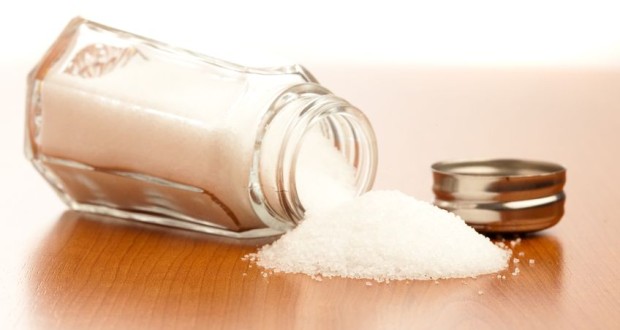If you closely review all the foods you eat throughout the day, you’ll probably notice that quite a few of them contain salt. All of that salt can quickly add up, and salt-heavy diets can eventually lead to chronic health problems. While it can be a bit of a challenge to avoid this ingredient, making some smart choices at the supermarket can help you get a better grip on your salt intake.
Salt, Sodium and Your Health
When discussing the impact of salt on the body, it’s important to also mention sodium. Sodium is often synonymous with salt, and for good reason; the chemical makeup of table salt is 40 percent sodium, with chloride accounting for the remaining 60 percent. Given that sodium is closely associated with salt, and that sodium is frequently used as an additive in foods, the Centers for Disease Control and Prevention (CDC) uses sodium intake as a barometer for salt consumption.
According to the CDC, adults are best served by limiting their sodium consumption to 2300 milligrams (mg) per day. For certain groups, this limit is even lower; those with high blood pressure, diabetes and chronic kidney disease are urged to limit their daily intake to 1500 mg. Likewise, African-Americans and adults aged 51 and older are encouraged to stick to a 1500 mg per day limit.
A diet high in sodium poses numerous risks to the body, including high blood pressure, stroke and heart failure. Other possible problems include kidney disease, osteoporosis, kidney stones, headaches, enlarged heart muscle and stomach cancer.
Uncovering Hidden Sodium
Many people struggle with keeping track of all the salt they put into their bodies. By keeping an eye out for the items listed below, you stand a better chance of preventing salty foods from derailing your health.
Breakfast Cereals – While it’s well understood that cereals are often brimming with sugar, shoppers are often unaware that their favorite cereal might also contain large amounts of sodium. Specifically, it’s not unheard of for some cereals to have 180 to 300 mg of sodium in just one serving. To put this in perspective, this figure represents 12 to 20 percent of the 1500 mg per day guideline.
Veggie Burgers – At first glance, veggie burgers would seem to offer a healthier alternative to regular hamburger patties, particularly for those who prefer not to eat meat. Unfortunately, veggie burgers are usually chocked full of processed additives, among them being sodium. In addition to any sodium found in the bun, ketchup and cheese, a single patty might hold up 400 to 500 mg of this ingredient.
Pancakes – Aside from cereals, you might also want to reconsider opting for pancakes at breakfast time, as sodium is found in abundance in pancake mixes. Ready-made mixes can contain up to 400 mg of sodium in a single serving. Pancakes made from pourable mixes aren’t that much better; just three pancakes made from this type of mix may hold up 700 milligrams worth of sodium.
Chicken Breast – Chicken breast is a good source of protein. Unfortunately, sodium is frequently used to boost the taste of chicken breasts sold at grocery stores. Fortunately, health-conscious shoppers do have the option of buying organic chicken breasts, which tend to have much less in the way of sodium. Likewise, chicken-breasts labeled with the words “non-enhanced” also represent a better bet.
Canned Soups – Canned soups are fairly popular with shoppers, as they require little effort to prepare and have a relatively decent taste. The problem is that canned soups, like many other processed foods, can largely attribute their flavor to copious amounts of sodium; a single serving can have up to 600 mg of this additive.
Processed Cheese – Liked canned soups, cereals and pancake mixes, packaged cheese slices are convenient, tasty – and packed full of sodium. Believe it or not, processed American cheese can have anywhere from 330 to 460 mg of sodium in a one-ounce slice.
Spaghetti Sauce – Spaghetti is one of the world’s most popular foods, and most people prefer to eat it with a good amount of spaghetti sauce. Not surprisingly, spaghetti sauce relies heavily on sodium to improve the flavor of pasta dishes, to the tune of more than 400 mg per serving.
Bread – In comparison to other items on this list, bread may not seem so bad when it comes to sodium content. The problem is that bread and rolls take up a large chunk of the average American’s diet. While the amount obviously varies based on brand and type, 120 mg of sodium can lurk within a single slice of bread. Eating just two sandwiches made with this kind of bread would mean ingesting 480 mg of sodium – and that’s not including the ingredients between the slices.
 Natural Knowledge 24/7 Educate yourself with nutrition, health and fitness knowledge.
Natural Knowledge 24/7 Educate yourself with nutrition, health and fitness knowledge.






